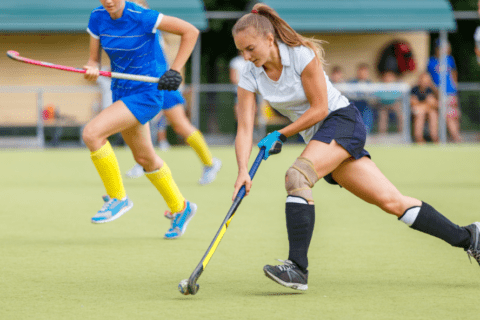
Sport Concussion…Return to Sport!
Published on: September 24, 2018
The Center for Disease Control (CDC) in the United States reports that between 2001 to 2012, the rate of emergency department (ED) visits for sports and recreation-related injuries with a diagnosis of concussion or traumatic brain injury (TBI), alone or in combination with other injuries, more than doubled among children (age 19 or younger). In fact, in 2012 alone, an estimated 329,290 children (age 19 or younger) were treated in U.S. EDs for sports and recreation-related injuries that included a diagnosis of concussion or TBI. While no two concussions are exactly alike, the majority will respond favorably within 7-10 days after the initial injury.
In 2017, a consensus statement on concussion in sport was published by leading International experts. The recommended guidelines include a step-like approach to an organized return to sport following a concussion. The 6-step guidelines are as follows:
- Symptom Limited Activity
- Light Aerobic Activity
- Sport-Specific Exercise
- Non-Contact Drills
- Full Contact Practice
- Return to Sport
Depending upon the sport (i.e. non-contact), the steps may be modified to accommodate the individual who has been concussed.
CASE STUDY
Janice Williams is an 18-year-old high school senior field hockey player who was accidentally hit in the head with an opposing player’s elbow in a contest one week ago. Janice was immediately removed from the game and did not return to play. She experienced no loss of consciousness, and complained mostly of a headache, some blurred vision, and slight balance challenges. No medical personnel were present at the game, therefore a complete SCAT5 or other proper examination were not performed at the time of injury. She visited her local emergency room that same evening and was diagnosed with concussion. An x-ray and an MRI performed were both negative. Prior to this incident, Janice has had no reported signs or symptoms of any head injury. Her overall past medical history is unremarkable.
Evaluation
Upon initial evaluation in the clinic 48 hours following the injury, Janice presents to this first clinic visit with no other symptoms. Her balance appears to be slightly improved already, though she continues to complain of visual challenges. Her memory recall is good, and her headache appears to be somewhat improved.
Symptom Evaluation: headache (4/10 rest), blurred vision on Post-Concussion Symptom Scale (PCSS)
ENT Exam: Unremarkable
Cervical Spine: AROM WNL all directions absent reported pain (0/10). Neg Smooth Pursuit Neck Torsion (SPNT) test and Neg Joint Position Sense (JPS) test
SCAT 5 Components:
-Cognitive Screening
-Orientation 5/5
-Immediate Memory 14/15
-Concentration
-Digits Backward 4/4
-Months in Reverse Order 5/5
-Neurological Screen
-Balance Examination BESS 23/30
-Delayed Recall
-5/5
-Decision 5/5
Vestibular Ocular Motor Screening (VOMS)
-Results positive for near point of convergence (NPC) distance
Neuropsychological Assessment
A computer-based neuropsychological exam was performed with valid and unremarkable results.
Problem List
1. Headache
2. Near point conversion visual deficit
3. Balance deficits
Goals/Objectives
1. Decrease headache at rest
2. Improve balance BESS score
3. Improve vision status
4. Return to sport
5. Return to school
Plan of Care
1. Vision training to improve VOMS NPC
2. Manual therapy to the cervical spine, focusing on pain reduction
3. Balance activities-focusing on dynamic activities and return to field turf surface
4. Patient education on concussion protocol for return to sport and return to school
Rehabilitation Intervention Considerations
In accordance with the Berlin Guidelines established for sport concussion, Janice would progress following the adolescent-specific paradigms. She has essentially already performed at step 1 – symptom limited activity, and can begin step 2 – light aerobic activity under supervision. The most recent evidence suggests that complete rest has no benefit.
The following activities can be performed in supervised rehabilitation:
Vision training – Adaptation, Gaze stabilization, Habituation, Saccades, Visual Tracking. And Convergence/Divergence activities
Manual therapy – Soft tissue mobilization for residual cervico-genic pain and headache
Balance – BESS test activity, Gans Sensory Organization Performance Test activity
Graded Exercise – Treadmill activity with gradual increased velocity measuring RPE, HR, BP and symptoms